%% -*- mode: literate-tidal; mode: iimage; mode: visual-line -*-
[To run examples, install tidal (from http://yaxu.org/tidal/) and
tidal-vis (from hackage), and evaluate the code at the end.]
Making Programming Languages to Dance to: Live Coding
with Tidal
Alex McLean
University of Leeds
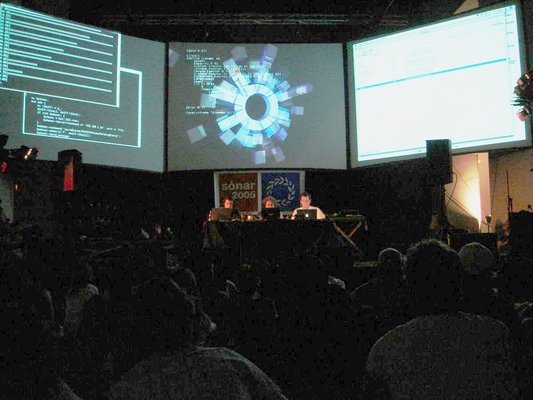 Principles
* Programmer as human
* Code as artistic expression
* Against autonomy
* Connecting with people through code
Live coding
Principles
* Programmer as human
* Code as artistic expression
* Against autonomy
* Connecting with people through code
Live coding
 http://toplap.org/
http://toplap.org/
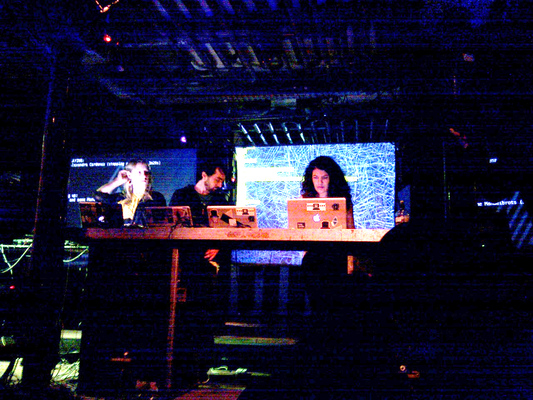 "Black slate" live coding as a design challenge
* Focused, creative flow, working in environment
* Just in time
* Immediate interaction with others through code changes
* Highly expressive; terse, and with close domain mapping
between code
and music
* Ability to change more important than ability to understand
* Little time for TDD, etc..
"Black slate" live coding as a design challenge
* Focused, creative flow, working in environment
* Just in time
* Immediate interaction with others through code changes
* Highly expressive; terse, and with close domain mapping
between code
and music
* Ability to change more important than ability to understand
* Little time for TDD, etc..
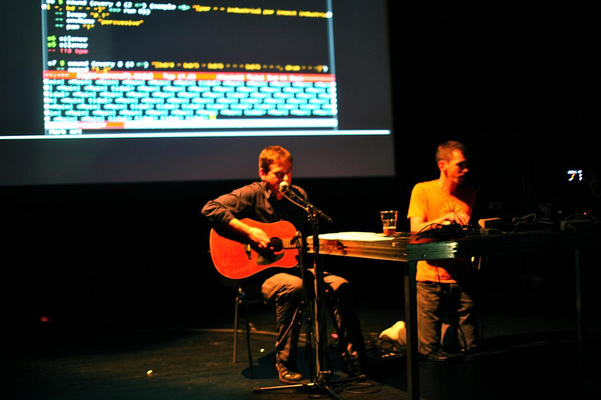 Live coding and Functional programming
* Overtone
* LiveCodeLab
* Fluxus
* Extempore
* Conductive
* Live-Sequencer
* Tidal
Live coding and Functional programming
* Overtone
* LiveCodeLab
* Fluxus
* Extempore
* Conductive
* Live-Sequencer
* Tidal
 Vague timeline to Tidal
* 2000 - London - Slub formed with Ade Ward, a lot of Perl scripts, RealBasic and C
* 2001 - Paradiso - First room dancing to our code (Paradiso, Amsterdam)
* 2001/2 - Berlin - Transmediale software art award
* 2004 - Hamburg - First live coding workshop, TOPLAP is born (and then feedback.pl)
* 2005 - Barcelona - Dave Griffiths joined, first good live coded slub performance (Sonar festival)
* 2006 - started learning Haskell (during MSc)
* 2009 - First Tidal-esque pattern language appeared
* 2012 - London - First ``Algorave''
* 2012 - Goldsmiths - Completed PhD ``Artist-Programmers and Programming Languages for the Arts''
* 2013 - Barcelona - Tidal became installable by others
Vague timeline to Tidal
* 2000 - London - Slub formed with Ade Ward, a lot of Perl scripts, RealBasic and C
* 2001 - Paradiso - First room dancing to our code (Paradiso, Amsterdam)
* 2001/2 - Berlin - Transmediale software art award
* 2004 - Hamburg - First live coding workshop, TOPLAP is born (and then feedback.pl)
* 2005 - Barcelona - Dave Griffiths joined, first good live coded slub performance (Sonar festival)
* 2006 - started learning Haskell (during MSc)
* 2009 - First Tidal-esque pattern language appeared
* 2012 - London - First ``Algorave''
* 2012 - Goldsmiths - Completed PhD ``Artist-Programmers and Programming Languages for the Arts''
* 2013 - Barcelona - Tidal became installable by others
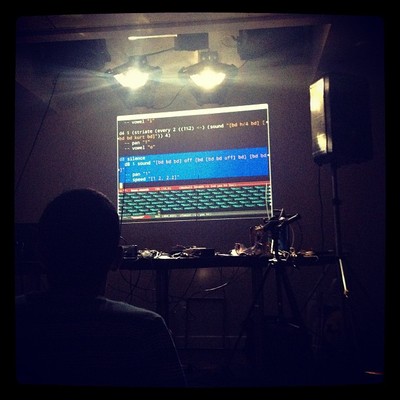 Tidal: Developed through performance
* 'Fully' improvised
* Hundreds of diverse performances
* Mainly with other live coders, percussionists, plus singers, dancers,
noise artists, a roots band, a punk banjo player..
* Broken techno and free Jazz
Tidal: Developed through performance
* 'Fully' improvised
* Hundreds of diverse performances
* Mainly with other live coders, percussionists, plus singers, dancers,
noise artists, a roots band, a punk banjo player..
* Broken techno and free Jazz
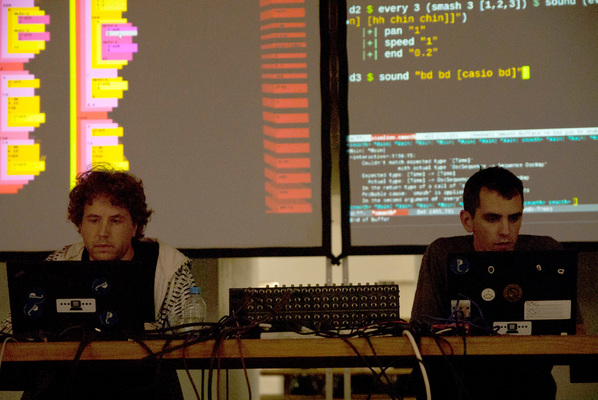 Slub
Slub
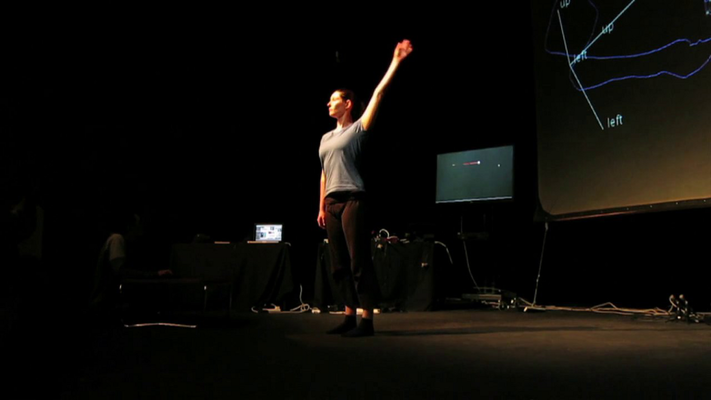 SC <> BC
SC <> BC
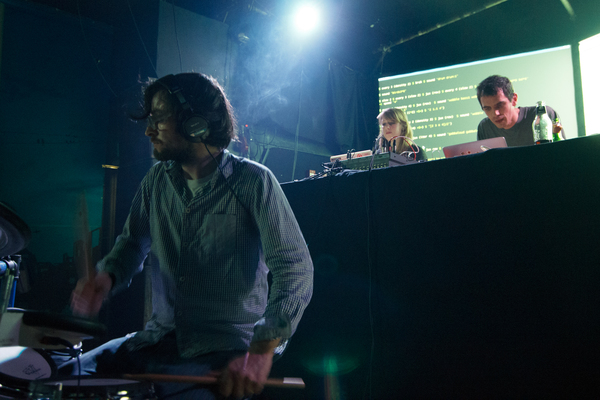 Canute (+ Shelly Knotts)
Canute (+ Shelly Knotts)
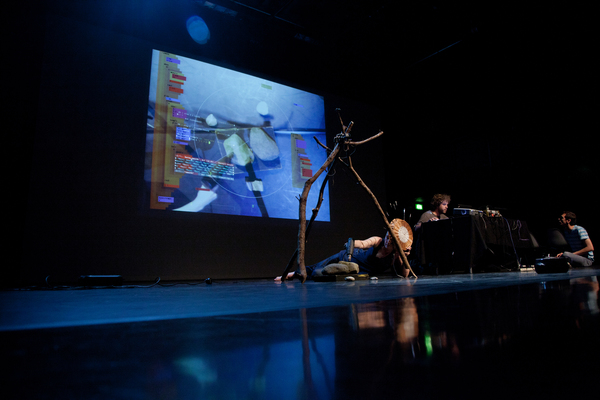 Hair of the horse with Hester Reeve
Hair of the horse with Hester Reeve
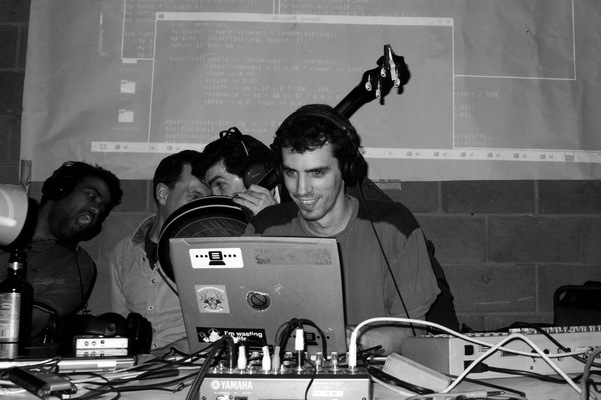 Corlab
Corlab
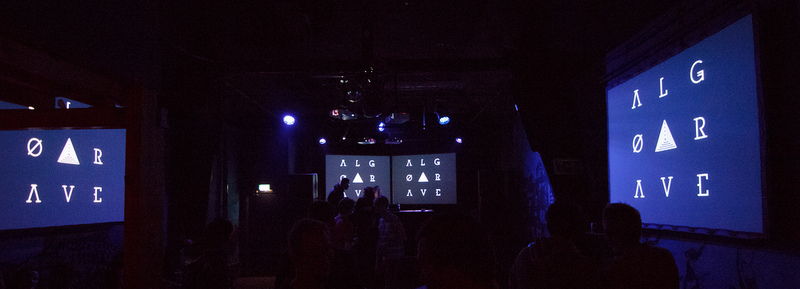 Algorave
Algorave
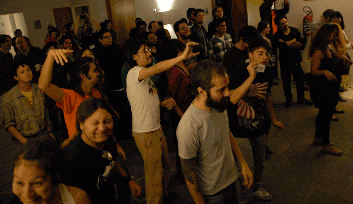 Algoravers
Tidal and Time
Algoravers
Tidal and Time
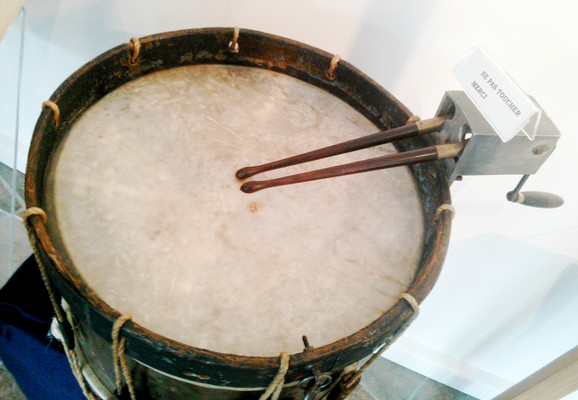 Tidal's Pattern Datatype
* Time is Rational
* Time is cyclic (with a period of 1)
* Polyrhythm works fine
* An Arc is a time range
* An Event is a value that is active within its own arc
* A Pattern is a function giving all the events occuring within a given arc
* May represent both discrete and continuous events
Tidal's Pattern Datatype
* Time is Rational
* Time is cyclic (with a period of 1)
* Polyrhythm works fine
* An Arc is a time range
* An Event is a value that is active within its own arc
* A Pattern is a function giving all the events occuring within a given arc
* May represent both discrete and continuous events
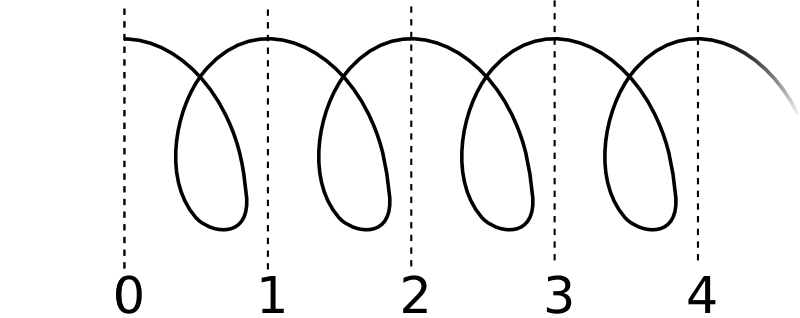
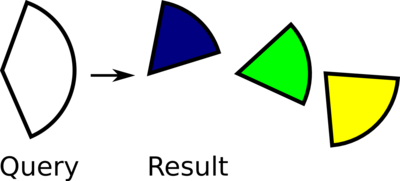 > type Time = Rational
> type Arc = (Time, Time)
> type Event a = (Arc, Arc, a)
> data Pattern a = Pattern (Arc -> [Event a])
Building and combining patterns
Starting with nothing:
> silence :: Pattern a
> silence = Pattern $ const []
A 'pure' value, one event every cycle:
> pure x =
> Pattern $ \(s, e) ->
> map (\t -> ((t%1, (t+1)%1),
> (t%1, (t+1)%1),
> x
> )
> )
> [floor s .. ((ceiling e) - 1)]
> d1 $ sound (pure "bd")
Manipulating time
> mapArc :: (Time -> Time) -> Arc -> Arc
> mapArc f (s,e) = (f s, f e)
> withQueryArc :: (Arc -> Arc) -> Pattern a -> Pattern a
> withQueryArc f p = Pattern $ \a -> arc p (f a)
> withQueryTime :: (Time -> Time) -> Pattern a -> Pattern a
> withQueryTime = withQueryArc . mapArc
> withResultArc :: (Arc -> Arc) -> Pattern a -> Pattern a
> withResultArc f p = Pattern $ \a -> mapArcs f $ arc p a
> withResultTime :: (Time -> Time) -> Pattern a -> Pattern a
> withResultTime = withResultArc . mapArc
Shifting time
> (<~) :: Time -> Pattern a -> Pattern a
> (<~) t p = withResultTime (subtract t) $ withQueryTime (+ t) p
> (~>) = (<~) . (0-)
Compressing time
> density :: Time -> Pattern a -> Pattern a
> density r p = withResultTime (/ r) $ withQueryTime (* r) p
> vis $ density 3 (cat [pure red, pure blue])
> densityGap :: Time -> Pattern a -> Pattern a
> densityGap r p = splitQueries $ withResultArc (\(s,e) -> (sam s + ((s - sam s)/r), (sam s + ((e - sam s)/r)))) $ Pattern (\a -> arc p $ mapArc (\t -> sam t + (min 1 (r * cyclePos t))) a)
> vis $ density 2 $ densityGap 2 (cat [pure red, pure blue])
> vis $ density 4 $ densityGap 2 (cat [pure red, pure blue])
> compress :: Arc -> Pattern a -> Pattern a
> compress a@(s,e) p = s ~> densityGap (1/(e-s)) p
> vis $ compress (1%4, 1%2) (cat [pure red, pure blue])
Merging patterns
> overlay :: Pattern a -> Pattern a -> Pattern a
> overlay p p' = Pattern $ \a -> (arc p a) ++ (arc p' a)
> vis $ overlay (pure red) (pure green)
> stack :: [Pattern a] -> Pattern a
> stack ps = foldr overlay silence ps
> cat :: [Pattern a] -> Pattern a
> cat ps = stack $ map (\(n, p) ->
> compress ((fromIntegral n) % (fromIntegral $ length ps), (fromIntegral n+1) % (fromIntegral $ length ps)) p) (zip [0..] ps)
> vis $ cat [pure red, pure blue]
> vis $ cat ["red blue", "green orange purple"]
Polyrhythmic DSL - Parsing strings
> vis $ density 4 $ p "red [blue, green purple] orange"
> vis $ p "[blue, ~ [green [yellow tomato]], orange]*16"
Overloading strings saves a couple of characters
> vis $ "[blue, ~ [green yellow], orange]*16"
Different brackets for different kinds of polyrhythm:
> vis $ density 6 $ "[red black, blue orange green]"
> vis $ density 6 $ "{red black, blue orange green}"
> vis $ "white*128?"
> vis $ "[[black white]*32, [[yellow ~ pink]*3 purple]*5, [white black]*16]]*16"
Pattern as a functor
> vis $ fmap (blend 0.5 red) "blue black"
> vis $ blend 0.5
> <$> "[blue orange, yellow grey]*16"
> <*> "white blue black red"
TRANSFORMATIONS
Reversal
How to reverse an infinite pattern?
> vis $ density 16 $ every 3 rev "blue grey orange"
every
> vis $ density 16 $ every 3 rev "blue grey orange"
> vis $ density 4 $ every 4 ((1/3) <~) "blue grey purple"
> grid $ every 4 ((1/3) <~) "blue grey purple"
whenmod
> vis $ density 16 $ whenmod 6 3 rev "blue grey orange"
iter
> vis $ density 4 $ iter 4 $ "blue green purple orange"
superimpose
> vis $ density 4 $ superimpose (iter 4) $ "blue green purple orange"
Combining transformations
> vis $ density 8 $ whenmod 8 4 (slow 4) $ every 2 ((1/2) <~) $
> every 3 (density 4) $ iter 4 "grey darkgrey green black"
Dirt
> d1 $ jux (iter 4) $ sound "bd sn:2"
> |+| (slow 3 $ speed "1 2")
> d1 $ (jux (|+| speed "2") $ every 3 rev $ slow 8 $ striate 128 $ sound "bev")
|+| vowel "a e i o"
> d1 $ every 3 (density 2) $ every 4 (density 2) $ (slow 2 $ spread' (chop) (every 3 rev "8 16 32 64") $ sound "[bass3 [~ bass3:8*2]]")
> |+| speed "[4 2]/5"
> d4 $ slowspread ($) [id, rev, iter 4, density 2, (|+| speed "4")] $ sound (pick <$> "bd*2 lighter*4" <*> (slow 3 $ run 12))
|+| vowel "a e i o u"
> d3 $ every 4 (within (0, 0.25) (density 4)) $ every 3 (0.25 <~) $ jux (iter 4) $ slow 4 $ chop 16 $ sound "shackup"
> d1 $ every 3 rev $ slow 2 $ every 2 (density 2) $ sound (samples "amencutup*4 sd8*4" (slow 1.5 $ run 12))
> |+| shape "0.4"
> |+| speed (scale 1 2 (slow 8 sine1) )
> d2 $ rev $ every 2 (inside 2 rev) $ chop 8 $ sound "breaks165"
> d5 $ slow 3 $ stack [(stut 8 0.9 1.5 $ sound "latibro:4 [[latibro:2*2 latibro:0*2] latibro:5*4]/8") |+| cutoff "[0.02 0.02 0.03 0.02 0.04 0.02 0.06 0.03]/8" |+| resonance "[0.7 0.4]/2" |+| gain "1.2" |+| pan "0.7"
> ,(density 1.5 $ stut 8 0.9 1.5 $ sound "latibro:4 [[latibro:2*2 latibro:0*2] latibro:5*4]/8")
> |+| cutoff (0.25 <~ "[0.02 0.025 0.03 0.03 0.04 0.03 0.06 0.03]/8") |+| resonance "[0.7 0.4]/2" |+| gain "1.2" |+| pan "0.3"
> ]
> d7 $ slow 4 $ jux (|+| speed "8.08") $ spread' (stut 4 0.95) "[1/8 1/8 1/8 1/8, 1/3 5 3 2]/4" $ sound "~ [tok tok:1 tok:2 tok:3]" |+| speed "8"
> d1 $ slow 4 $ spread ($) [id, trunc (1/4), (0.25 <~), (|+| begin "0") . (|+| end "1") . chop 4] $ every 2 (0.25 ~>) $ jux (|+| speed "1.64 ! ! 4") $ sound "[bass3:6 ~ ~ bass3:6] [~ bass3:6]" |+| speed ((*1) <$> "[1.66 ! ! 4.02]")
> d1 $ slow 2 $ jux ((stut 2 0.5 3) . (|+| speed "1")) $ slow 4 $ striate 32 $ sound "mef*2"
|+| speed "2"
> d1 $ jux (iter 4) $ every 4 (0.5 <~) $ every 3 (0.25 <~) $ chop 8 $ sound "rave:6 rave:7?"
|+| shape "0.3"
THANKS FOR LISTENING
Grab it here:
http://yaxu.org/tidal/
import Sound.Tidal.Vis
import qualified Graphics.Rendering.Cairo as C
import Data.Colour
import Data.Colour.Names
import Data.Colour.SRGB
import System.Cmd
let vis pat = do vLines (C.withSVGSurface) "vis.svg" (400,100) pat 1 1
rawSystem "/home/alex/Dropbox/bin/fixsvg.pl" ["vis.svg"]
rawSystem "convert" ["vis.svg", "vis.pdf"]
return ()
grid pat = do vLines (C.withSVGSurface) "vis.svg" (400,400) pat 10 10
rawSystem "/home/alex/Dropbox/bin/fixsvg.pl" ["vis.svg"]
rawSystem "convert" ["vis.svg", "vis.pdf"]
return ()
> type Time = Rational
> type Arc = (Time, Time)
> type Event a = (Arc, Arc, a)
> data Pattern a = Pattern (Arc -> [Event a])
Building and combining patterns
Starting with nothing:
> silence :: Pattern a
> silence = Pattern $ const []
A 'pure' value, one event every cycle:
> pure x =
> Pattern $ \(s, e) ->
> map (\t -> ((t%1, (t+1)%1),
> (t%1, (t+1)%1),
> x
> )
> )
> [floor s .. ((ceiling e) - 1)]
> d1 $ sound (pure "bd")
Manipulating time
> mapArc :: (Time -> Time) -> Arc -> Arc
> mapArc f (s,e) = (f s, f e)
> withQueryArc :: (Arc -> Arc) -> Pattern a -> Pattern a
> withQueryArc f p = Pattern $ \a -> arc p (f a)
> withQueryTime :: (Time -> Time) -> Pattern a -> Pattern a
> withQueryTime = withQueryArc . mapArc
> withResultArc :: (Arc -> Arc) -> Pattern a -> Pattern a
> withResultArc f p = Pattern $ \a -> mapArcs f $ arc p a
> withResultTime :: (Time -> Time) -> Pattern a -> Pattern a
> withResultTime = withResultArc . mapArc
Shifting time
> (<~) :: Time -> Pattern a -> Pattern a
> (<~) t p = withResultTime (subtract t) $ withQueryTime (+ t) p
> (~>) = (<~) . (0-)
Compressing time
> density :: Time -> Pattern a -> Pattern a
> density r p = withResultTime (/ r) $ withQueryTime (* r) p
> vis $ density 3 (cat [pure red, pure blue])
> densityGap :: Time -> Pattern a -> Pattern a
> densityGap r p = splitQueries $ withResultArc (\(s,e) -> (sam s + ((s - sam s)/r), (sam s + ((e - sam s)/r)))) $ Pattern (\a -> arc p $ mapArc (\t -> sam t + (min 1 (r * cyclePos t))) a)
> vis $ density 2 $ densityGap 2 (cat [pure red, pure blue])
> vis $ density 4 $ densityGap 2 (cat [pure red, pure blue])
> compress :: Arc -> Pattern a -> Pattern a
> compress a@(s,e) p = s ~> densityGap (1/(e-s)) p
> vis $ compress (1%4, 1%2) (cat [pure red, pure blue])
Merging patterns
> overlay :: Pattern a -> Pattern a -> Pattern a
> overlay p p' = Pattern $ \a -> (arc p a) ++ (arc p' a)
> vis $ overlay (pure red) (pure green)
> stack :: [Pattern a] -> Pattern a
> stack ps = foldr overlay silence ps
> cat :: [Pattern a] -> Pattern a
> cat ps = stack $ map (\(n, p) ->
> compress ((fromIntegral n) % (fromIntegral $ length ps), (fromIntegral n+1) % (fromIntegral $ length ps)) p) (zip [0..] ps)
> vis $ cat [pure red, pure blue]
> vis $ cat ["red blue", "green orange purple"]
Polyrhythmic DSL - Parsing strings
> vis $ density 4 $ p "red [blue, green purple] orange"
> vis $ p "[blue, ~ [green [yellow tomato]], orange]*16"
Overloading strings saves a couple of characters
> vis $ "[blue, ~ [green yellow], orange]*16"
Different brackets for different kinds of polyrhythm:
> vis $ density 6 $ "[red black, blue orange green]"
> vis $ density 6 $ "{red black, blue orange green}"
> vis $ "white*128?"
> vis $ "[[black white]*32, [[yellow ~ pink]*3 purple]*5, [white black]*16]]*16"
Pattern as a functor
> vis $ fmap (blend 0.5 red) "blue black"
> vis $ blend 0.5
> <$> "[blue orange, yellow grey]*16"
> <*> "white blue black red"
TRANSFORMATIONS
Reversal
How to reverse an infinite pattern?
> vis $ density 16 $ every 3 rev "blue grey orange"
every
> vis $ density 16 $ every 3 rev "blue grey orange"
> vis $ density 4 $ every 4 ((1/3) <~) "blue grey purple"
> grid $ every 4 ((1/3) <~) "blue grey purple"
whenmod
> vis $ density 16 $ whenmod 6 3 rev "blue grey orange"
iter
> vis $ density 4 $ iter 4 $ "blue green purple orange"
superimpose
> vis $ density 4 $ superimpose (iter 4) $ "blue green purple orange"
Combining transformations
> vis $ density 8 $ whenmod 8 4 (slow 4) $ every 2 ((1/2) <~) $
> every 3 (density 4) $ iter 4 "grey darkgrey green black"
Dirt
> d1 $ jux (iter 4) $ sound "bd sn:2"
> |+| (slow 3 $ speed "1 2")
> d1 $ (jux (|+| speed "2") $ every 3 rev $ slow 8 $ striate 128 $ sound "bev")
|+| vowel "a e i o"
> d1 $ every 3 (density 2) $ every 4 (density 2) $ (slow 2 $ spread' (chop) (every 3 rev "8 16 32 64") $ sound "[bass3 [~ bass3:8*2]]")
> |+| speed "[4 2]/5"
> d4 $ slowspread ($) [id, rev, iter 4, density 2, (|+| speed "4")] $ sound (pick <$> "bd*2 lighter*4" <*> (slow 3 $ run 12))
|+| vowel "a e i o u"
> d3 $ every 4 (within (0, 0.25) (density 4)) $ every 3 (0.25 <~) $ jux (iter 4) $ slow 4 $ chop 16 $ sound "shackup"
> d1 $ every 3 rev $ slow 2 $ every 2 (density 2) $ sound (samples "amencutup*4 sd8*4" (slow 1.5 $ run 12))
> |+| shape "0.4"
> |+| speed (scale 1 2 (slow 8 sine1) )
> d2 $ rev $ every 2 (inside 2 rev) $ chop 8 $ sound "breaks165"
> d5 $ slow 3 $ stack [(stut 8 0.9 1.5 $ sound "latibro:4 [[latibro:2*2 latibro:0*2] latibro:5*4]/8") |+| cutoff "[0.02 0.02 0.03 0.02 0.04 0.02 0.06 0.03]/8" |+| resonance "[0.7 0.4]/2" |+| gain "1.2" |+| pan "0.7"
> ,(density 1.5 $ stut 8 0.9 1.5 $ sound "latibro:4 [[latibro:2*2 latibro:0*2] latibro:5*4]/8")
> |+| cutoff (0.25 <~ "[0.02 0.025 0.03 0.03 0.04 0.03 0.06 0.03]/8") |+| resonance "[0.7 0.4]/2" |+| gain "1.2" |+| pan "0.3"
> ]
> d7 $ slow 4 $ jux (|+| speed "8.08") $ spread' (stut 4 0.95) "[1/8 1/8 1/8 1/8, 1/3 5 3 2]/4" $ sound "~ [tok tok:1 tok:2 tok:3]" |+| speed "8"
> d1 $ slow 4 $ spread ($) [id, trunc (1/4), (0.25 <~), (|+| begin "0") . (|+| end "1") . chop 4] $ every 2 (0.25 ~>) $ jux (|+| speed "1.64 ! ! 4") $ sound "[bass3:6 ~ ~ bass3:6] [~ bass3:6]" |+| speed ((*1) <$> "[1.66 ! ! 4.02]")
> d1 $ slow 2 $ jux ((stut 2 0.5 3) . (|+| speed "1")) $ slow 4 $ striate 32 $ sound "mef*2"
|+| speed "2"
> d1 $ jux (iter 4) $ every 4 (0.5 <~) $ every 3 (0.25 <~) $ chop 8 $ sound "rave:6 rave:7?"
|+| shape "0.3"
THANKS FOR LISTENING
Grab it here:
http://yaxu.org/tidal/
import Sound.Tidal.Vis
import qualified Graphics.Rendering.Cairo as C
import Data.Colour
import Data.Colour.Names
import Data.Colour.SRGB
import System.Cmd
let vis pat = do vLines (C.withSVGSurface) "vis.svg" (400,100) pat 1 1
rawSystem "/home/alex/Dropbox/bin/fixsvg.pl" ["vis.svg"]
rawSystem "convert" ["vis.svg", "vis.pdf"]
return ()
grid pat = do vLines (C.withSVGSurface) "vis.svg" (400,400) pat 10 10
rawSystem "/home/alex/Dropbox/bin/fixsvg.pl" ["vis.svg"]
rawSystem "convert" ["vis.svg", "vis.pdf"]
return ()
 Principles
* Programmer as human
* Code as artistic expression
* Against autonomy
* Connecting with people through code
Live coding
Principles
* Programmer as human
* Code as artistic expression
* Against autonomy
* Connecting with people through code
Live coding
 http://toplap.org/
http://toplap.org/
 "Black slate" live coding as a design challenge
* Focused, creative flow, working in environment
* Just in time
* Immediate interaction with others through code changes
* Highly expressive; terse, and with close domain mapping
between code
and music
* Ability to change more important than ability to understand
* Little time for TDD, etc..
"Black slate" live coding as a design challenge
* Focused, creative flow, working in environment
* Just in time
* Immediate interaction with others through code changes
* Highly expressive; terse, and with close domain mapping
between code
and music
* Ability to change more important than ability to understand
* Little time for TDD, etc..
 Vague timeline to Tidal
* 2000 - London - Slub formed with Ade Ward, a lot of Perl scripts, RealBasic and C
* 2001 - Paradiso - First room dancing to our code (Paradiso, Amsterdam)
* 2001/2 - Berlin - Transmediale software art award
* 2004 - Hamburg - First live coding workshop, TOPLAP is born (and then feedback.pl)
* 2005 - Barcelona - Dave Griffiths joined, first good live coded slub performance (Sonar festival)
* 2006 - started learning Haskell (during MSc)
* 2009 - First Tidal-esque pattern language appeared
* 2012 - London - First ``Algorave''
* 2012 - Goldsmiths - Completed PhD ``Artist-Programmers and Programming Languages for the Arts''
* 2013 - Barcelona - Tidal became installable by others
Vague timeline to Tidal
* 2000 - London - Slub formed with Ade Ward, a lot of Perl scripts, RealBasic and C
* 2001 - Paradiso - First room dancing to our code (Paradiso, Amsterdam)
* 2001/2 - Berlin - Transmediale software art award
* 2004 - Hamburg - First live coding workshop, TOPLAP is born (and then feedback.pl)
* 2005 - Barcelona - Dave Griffiths joined, first good live coded slub performance (Sonar festival)
* 2006 - started learning Haskell (during MSc)
* 2009 - First Tidal-esque pattern language appeared
* 2012 - London - First ``Algorave''
* 2012 - Goldsmiths - Completed PhD ``Artist-Programmers and Programming Languages for the Arts''
* 2013 - Barcelona - Tidal became installable by others
 Tidal: Developed through performance
* 'Fully' improvised
* Hundreds of diverse performances
* Mainly with other live coders, percussionists, plus singers, dancers,
noise artists, a roots band, a punk banjo player..
* Broken techno and free Jazz
Tidal: Developed through performance
* 'Fully' improvised
* Hundreds of diverse performances
* Mainly with other live coders, percussionists, plus singers, dancers,
noise artists, a roots band, a punk banjo player..
* Broken techno and free Jazz
 Slub
Slub
 SC <> BC
SC <> BC
 Canute (+ Shelly Knotts)
Canute (+ Shelly Knotts)
 Hair of the horse with Hester Reeve
Hair of the horse with Hester Reeve
 Corlab
Corlab
 Algorave
Algorave
 Algoravers
Tidal and Time
Algoravers
Tidal and Time
 Tidal's Pattern Datatype
* Time is Rational
* Time is cyclic (with a period of 1)
* Polyrhythm works fine
* An Arc is a time range
* An Event is a value that is active within its own arc
* A Pattern is a function giving all the events occuring within a given arc
* May represent both discrete and continuous events
Tidal's Pattern Datatype
* Time is Rational
* Time is cyclic (with a period of 1)
* Polyrhythm works fine
* An Arc is a time range
* An Event is a value that is active within its own arc
* A Pattern is a function giving all the events occuring within a given arc
* May represent both discrete and continuous events

 > type Time = Rational
> type Arc = (Time, Time)
> type Event a = (Arc, Arc, a)
> data Pattern a = Pattern (Arc -> [Event a])
Building and combining patterns
Starting with nothing:
> silence :: Pattern a
> silence = Pattern $ const []
A 'pure' value, one event every cycle:
> pure x =
> Pattern $ \(s, e) ->
> map (\t -> ((t%1, (t+1)%1),
> (t%1, (t+1)%1),
> x
> )
> )
> [floor s .. ((ceiling e) - 1)]
> d1 $ sound (pure "bd")
Manipulating time
> mapArc :: (Time -> Time) -> Arc -> Arc
> mapArc f (s,e) = (f s, f e)
> withQueryArc :: (Arc -> Arc) -> Pattern a -> Pattern a
> withQueryArc f p = Pattern $ \a -> arc p (f a)
> withQueryTime :: (Time -> Time) -> Pattern a -> Pattern a
> withQueryTime = withQueryArc . mapArc
> withResultArc :: (Arc -> Arc) -> Pattern a -> Pattern a
> withResultArc f p = Pattern $ \a -> mapArcs f $ arc p a
> withResultTime :: (Time -> Time) -> Pattern a -> Pattern a
> withResultTime = withResultArc . mapArc
Shifting time
> (<~) :: Time -> Pattern a -> Pattern a
> (<~) t p = withResultTime (subtract t) $ withQueryTime (+ t) p
> (~>) = (<~) . (0-)
Compressing time
> density :: Time -> Pattern a -> Pattern a
> density r p = withResultTime (/ r) $ withQueryTime (* r) p
> vis $ density 3 (cat [pure red, pure blue])
> densityGap :: Time -> Pattern a -> Pattern a
> densityGap r p = splitQueries $ withResultArc (\(s,e) -> (sam s + ((s - sam s)/r), (sam s + ((e - sam s)/r)))) $ Pattern (\a -> arc p $ mapArc (\t -> sam t + (min 1 (r * cyclePos t))) a)
> vis $ density 2 $ densityGap 2 (cat [pure red, pure blue])
> vis $ density 4 $ densityGap 2 (cat [pure red, pure blue])
> compress :: Arc -> Pattern a -> Pattern a
> compress a@(s,e) p = s ~> densityGap (1/(e-s)) p
> vis $ compress (1%4, 1%2) (cat [pure red, pure blue])
Merging patterns
> overlay :: Pattern a -> Pattern a -> Pattern a
> overlay p p' = Pattern $ \a -> (arc p a) ++ (arc p' a)
> vis $ overlay (pure red) (pure green)
> stack :: [Pattern a] -> Pattern a
> stack ps = foldr overlay silence ps
> cat :: [Pattern a] -> Pattern a
> cat ps = stack $ map (\(n, p) ->
> compress ((fromIntegral n) % (fromIntegral $ length ps), (fromIntegral n+1) % (fromIntegral $ length ps)) p) (zip [0..] ps)
> vis $ cat [pure red, pure blue]
> vis $ cat ["red blue", "green orange purple"]
Polyrhythmic DSL - Parsing strings
> vis $ density 4 $ p "red [blue, green purple] orange"
> vis $ p "[blue, ~ [green [yellow tomato]], orange]*16"
Overloading strings saves a couple of characters
> vis $ "[blue, ~ [green yellow], orange]*16"
Different brackets for different kinds of polyrhythm:
> vis $ density 6 $ "[red black, blue orange green]"
> vis $ density 6 $ "{red black, blue orange green}"
> vis $ "white*128?"
> vis $ "[[black white]*32, [[yellow ~ pink]*3 purple]*5, [white black]*16]]*16"
Pattern as a functor
> vis $ fmap (blend 0.5 red) "blue black"
> vis $ blend 0.5
> <$> "[blue orange, yellow grey]*16"
> <*> "white blue black red"
TRANSFORMATIONS
Reversal
How to reverse an infinite pattern?
> vis $ density 16 $ every 3 rev "blue grey orange"
every
> vis $ density 16 $ every 3 rev "blue grey orange"
> vis $ density 4 $ every 4 ((1/3) <~) "blue grey purple"
> grid $ every 4 ((1/3) <~) "blue grey purple"
whenmod
> vis $ density 16 $ whenmod 6 3 rev "blue grey orange"
iter
> vis $ density 4 $ iter 4 $ "blue green purple orange"
superimpose
> vis $ density 4 $ superimpose (iter 4) $ "blue green purple orange"
Combining transformations
> vis $ density 8 $ whenmod 8 4 (slow 4) $ every 2 ((1/2) <~) $
> every 3 (density 4) $ iter 4 "grey darkgrey green black"
Dirt
> d1 $ jux (iter 4) $ sound "bd sn:2"
> |+| (slow 3 $ speed "1 2")
> d1 $ (jux (|+| speed "2") $ every 3 rev $ slow 8 $ striate 128 $ sound "bev")
|+| vowel "a e i o"
> d1 $ every 3 (density 2) $ every 4 (density 2) $ (slow 2 $ spread' (chop) (every 3 rev "8 16 32 64") $ sound "[bass3 [~ bass3:8*2]]")
> |+| speed "[4 2]/5"
> d4 $ slowspread ($) [id, rev, iter 4, density 2, (|+| speed "4")] $ sound (pick <$> "bd*2 lighter*4" <*> (slow 3 $ run 12))
|+| vowel "a e i o u"
> d3 $ every 4 (within (0, 0.25) (density 4)) $ every 3 (0.25 <~) $ jux (iter 4) $ slow 4 $ chop 16 $ sound "shackup"
> d1 $ every 3 rev $ slow 2 $ every 2 (density 2) $ sound (samples "amencutup*4 sd8*4" (slow 1.5 $ run 12))
> |+| shape "0.4"
> |+| speed (scale 1 2 (slow 8 sine1) )
> d2 $ rev $ every 2 (inside 2 rev) $ chop 8 $ sound "breaks165"
> d5 $ slow 3 $ stack [(stut 8 0.9 1.5 $ sound "latibro:4 [[latibro:2*2 latibro:0*2] latibro:5*4]/8") |+| cutoff "[0.02 0.02 0.03 0.02 0.04 0.02 0.06 0.03]/8" |+| resonance "[0.7 0.4]/2" |+| gain "1.2" |+| pan "0.7"
> ,(density 1.5 $ stut 8 0.9 1.5 $ sound "latibro:4 [[latibro:2*2 latibro:0*2] latibro:5*4]/8")
> |+| cutoff (0.25 <~ "[0.02 0.025 0.03 0.03 0.04 0.03 0.06 0.03]/8") |+| resonance "[0.7 0.4]/2" |+| gain "1.2" |+| pan "0.3"
> ]
> d7 $ slow 4 $ jux (|+| speed "8.08") $ spread' (stut 4 0.95) "[1/8 1/8 1/8 1/8, 1/3 5 3 2]/4" $ sound "~ [tok tok:1 tok:2 tok:3]" |+| speed "8"
> d1 $ slow 4 $ spread ($) [id, trunc (1/4), (0.25 <~), (|+| begin "0") . (|+| end "1") . chop 4] $ every 2 (0.25 ~>) $ jux (|+| speed "1.64 ! ! 4") $ sound "[bass3:6 ~ ~ bass3:6] [~ bass3:6]" |+| speed ((*1) <$> "[1.66 ! ! 4.02]")
> d1 $ slow 2 $ jux ((stut 2 0.5 3) . (|+| speed "1")) $ slow 4 $ striate 32 $ sound "mef*2"
|+| speed "2"
> d1 $ jux (iter 4) $ every 4 (0.5 <~) $ every 3 (0.25 <~) $ chop 8 $ sound "rave:6 rave:7?"
|+| shape "0.3"
THANKS FOR LISTENING
Grab it here:
http://yaxu.org/tidal/
import Sound.Tidal.Vis
import qualified Graphics.Rendering.Cairo as C
import Data.Colour
import Data.Colour.Names
import Data.Colour.SRGB
import System.Cmd
let vis pat = do vLines (C.withSVGSurface) "vis.svg" (400,100) pat 1 1
rawSystem "/home/alex/Dropbox/bin/fixsvg.pl" ["vis.svg"]
rawSystem "convert" ["vis.svg", "vis.pdf"]
return ()
grid pat = do vLines (C.withSVGSurface) "vis.svg" (400,400) pat 10 10
rawSystem "/home/alex/Dropbox/bin/fixsvg.pl" ["vis.svg"]
rawSystem "convert" ["vis.svg", "vis.pdf"]
return ()
> type Time = Rational
> type Arc = (Time, Time)
> type Event a = (Arc, Arc, a)
> data Pattern a = Pattern (Arc -> [Event a])
Building and combining patterns
Starting with nothing:
> silence :: Pattern a
> silence = Pattern $ const []
A 'pure' value, one event every cycle:
> pure x =
> Pattern $ \(s, e) ->
> map (\t -> ((t%1, (t+1)%1),
> (t%1, (t+1)%1),
> x
> )
> )
> [floor s .. ((ceiling e) - 1)]
> d1 $ sound (pure "bd")
Manipulating time
> mapArc :: (Time -> Time) -> Arc -> Arc
> mapArc f (s,e) = (f s, f e)
> withQueryArc :: (Arc -> Arc) -> Pattern a -> Pattern a
> withQueryArc f p = Pattern $ \a -> arc p (f a)
> withQueryTime :: (Time -> Time) -> Pattern a -> Pattern a
> withQueryTime = withQueryArc . mapArc
> withResultArc :: (Arc -> Arc) -> Pattern a -> Pattern a
> withResultArc f p = Pattern $ \a -> mapArcs f $ arc p a
> withResultTime :: (Time -> Time) -> Pattern a -> Pattern a
> withResultTime = withResultArc . mapArc
Shifting time
> (<~) :: Time -> Pattern a -> Pattern a
> (<~) t p = withResultTime (subtract t) $ withQueryTime (+ t) p
> (~>) = (<~) . (0-)
Compressing time
> density :: Time -> Pattern a -> Pattern a
> density r p = withResultTime (/ r) $ withQueryTime (* r) p
> vis $ density 3 (cat [pure red, pure blue])
> densityGap :: Time -> Pattern a -> Pattern a
> densityGap r p = splitQueries $ withResultArc (\(s,e) -> (sam s + ((s - sam s)/r), (sam s + ((e - sam s)/r)))) $ Pattern (\a -> arc p $ mapArc (\t -> sam t + (min 1 (r * cyclePos t))) a)
> vis $ density 2 $ densityGap 2 (cat [pure red, pure blue])
> vis $ density 4 $ densityGap 2 (cat [pure red, pure blue])
> compress :: Arc -> Pattern a -> Pattern a
> compress a@(s,e) p = s ~> densityGap (1/(e-s)) p
> vis $ compress (1%4, 1%2) (cat [pure red, pure blue])
Merging patterns
> overlay :: Pattern a -> Pattern a -> Pattern a
> overlay p p' = Pattern $ \a -> (arc p a) ++ (arc p' a)
> vis $ overlay (pure red) (pure green)
> stack :: [Pattern a] -> Pattern a
> stack ps = foldr overlay silence ps
> cat :: [Pattern a] -> Pattern a
> cat ps = stack $ map (\(n, p) ->
> compress ((fromIntegral n) % (fromIntegral $ length ps), (fromIntegral n+1) % (fromIntegral $ length ps)) p) (zip [0..] ps)
> vis $ cat [pure red, pure blue]
> vis $ cat ["red blue", "green orange purple"]
Polyrhythmic DSL - Parsing strings
> vis $ density 4 $ p "red [blue, green purple] orange"
> vis $ p "[blue, ~ [green [yellow tomato]], orange]*16"
Overloading strings saves a couple of characters
> vis $ "[blue, ~ [green yellow], orange]*16"
Different brackets for different kinds of polyrhythm:
> vis $ density 6 $ "[red black, blue orange green]"
> vis $ density 6 $ "{red black, blue orange green}"
> vis $ "white*128?"
> vis $ "[[black white]*32, [[yellow ~ pink]*3 purple]*5, [white black]*16]]*16"
Pattern as a functor
> vis $ fmap (blend 0.5 red) "blue black"
> vis $ blend 0.5
> <$> "[blue orange, yellow grey]*16"
> <*> "white blue black red"
TRANSFORMATIONS
Reversal
How to reverse an infinite pattern?
> vis $ density 16 $ every 3 rev "blue grey orange"
every
> vis $ density 16 $ every 3 rev "blue grey orange"
> vis $ density 4 $ every 4 ((1/3) <~) "blue grey purple"
> grid $ every 4 ((1/3) <~) "blue grey purple"
whenmod
> vis $ density 16 $ whenmod 6 3 rev "blue grey orange"
iter
> vis $ density 4 $ iter 4 $ "blue green purple orange"
superimpose
> vis $ density 4 $ superimpose (iter 4) $ "blue green purple orange"
Combining transformations
> vis $ density 8 $ whenmod 8 4 (slow 4) $ every 2 ((1/2) <~) $
> every 3 (density 4) $ iter 4 "grey darkgrey green black"
Dirt
> d1 $ jux (iter 4) $ sound "bd sn:2"
> |+| (slow 3 $ speed "1 2")
> d1 $ (jux (|+| speed "2") $ every 3 rev $ slow 8 $ striate 128 $ sound "bev")
|+| vowel "a e i o"
> d1 $ every 3 (density 2) $ every 4 (density 2) $ (slow 2 $ spread' (chop) (every 3 rev "8 16 32 64") $ sound "[bass3 [~ bass3:8*2]]")
> |+| speed "[4 2]/5"
> d4 $ slowspread ($) [id, rev, iter 4, density 2, (|+| speed "4")] $ sound (pick <$> "bd*2 lighter*4" <*> (slow 3 $ run 12))
|+| vowel "a e i o u"
> d3 $ every 4 (within (0, 0.25) (density 4)) $ every 3 (0.25 <~) $ jux (iter 4) $ slow 4 $ chop 16 $ sound "shackup"
> d1 $ every 3 rev $ slow 2 $ every 2 (density 2) $ sound (samples "amencutup*4 sd8*4" (slow 1.5 $ run 12))
> |+| shape "0.4"
> |+| speed (scale 1 2 (slow 8 sine1) )
> d2 $ rev $ every 2 (inside 2 rev) $ chop 8 $ sound "breaks165"
> d5 $ slow 3 $ stack [(stut 8 0.9 1.5 $ sound "latibro:4 [[latibro:2*2 latibro:0*2] latibro:5*4]/8") |+| cutoff "[0.02 0.02 0.03 0.02 0.04 0.02 0.06 0.03]/8" |+| resonance "[0.7 0.4]/2" |+| gain "1.2" |+| pan "0.7"
> ,(density 1.5 $ stut 8 0.9 1.5 $ sound "latibro:4 [[latibro:2*2 latibro:0*2] latibro:5*4]/8")
> |+| cutoff (0.25 <~ "[0.02 0.025 0.03 0.03 0.04 0.03 0.06 0.03]/8") |+| resonance "[0.7 0.4]/2" |+| gain "1.2" |+| pan "0.3"
> ]
> d7 $ slow 4 $ jux (|+| speed "8.08") $ spread' (stut 4 0.95) "[1/8 1/8 1/8 1/8, 1/3 5 3 2]/4" $ sound "~ [tok tok:1 tok:2 tok:3]" |+| speed "8"
> d1 $ slow 4 $ spread ($) [id, trunc (1/4), (0.25 <~), (|+| begin "0") . (|+| end "1") . chop 4] $ every 2 (0.25 ~>) $ jux (|+| speed "1.64 ! ! 4") $ sound "[bass3:6 ~ ~ bass3:6] [~ bass3:6]" |+| speed ((*1) <$> "[1.66 ! ! 4.02]")
> d1 $ slow 2 $ jux ((stut 2 0.5 3) . (|+| speed "1")) $ slow 4 $ striate 32 $ sound "mef*2"
|+| speed "2"
> d1 $ jux (iter 4) $ every 4 (0.5 <~) $ every 3 (0.25 <~) $ chop 8 $ sound "rave:6 rave:7?"
|+| shape "0.3"
THANKS FOR LISTENING
Grab it here:
http://yaxu.org/tidal/
import Sound.Tidal.Vis
import qualified Graphics.Rendering.Cairo as C
import Data.Colour
import Data.Colour.Names
import Data.Colour.SRGB
import System.Cmd
let vis pat = do vLines (C.withSVGSurface) "vis.svg" (400,100) pat 1 1
rawSystem "/home/alex/Dropbox/bin/fixsvg.pl" ["vis.svg"]
rawSystem "convert" ["vis.svg", "vis.pdf"]
return ()
grid pat = do vLines (C.withSVGSurface) "vis.svg" (400,400) pat 10 10
rawSystem "/home/alex/Dropbox/bin/fixsvg.pl" ["vis.svg"]
rawSystem "convert" ["vis.svg", "vis.pdf"]
return ()